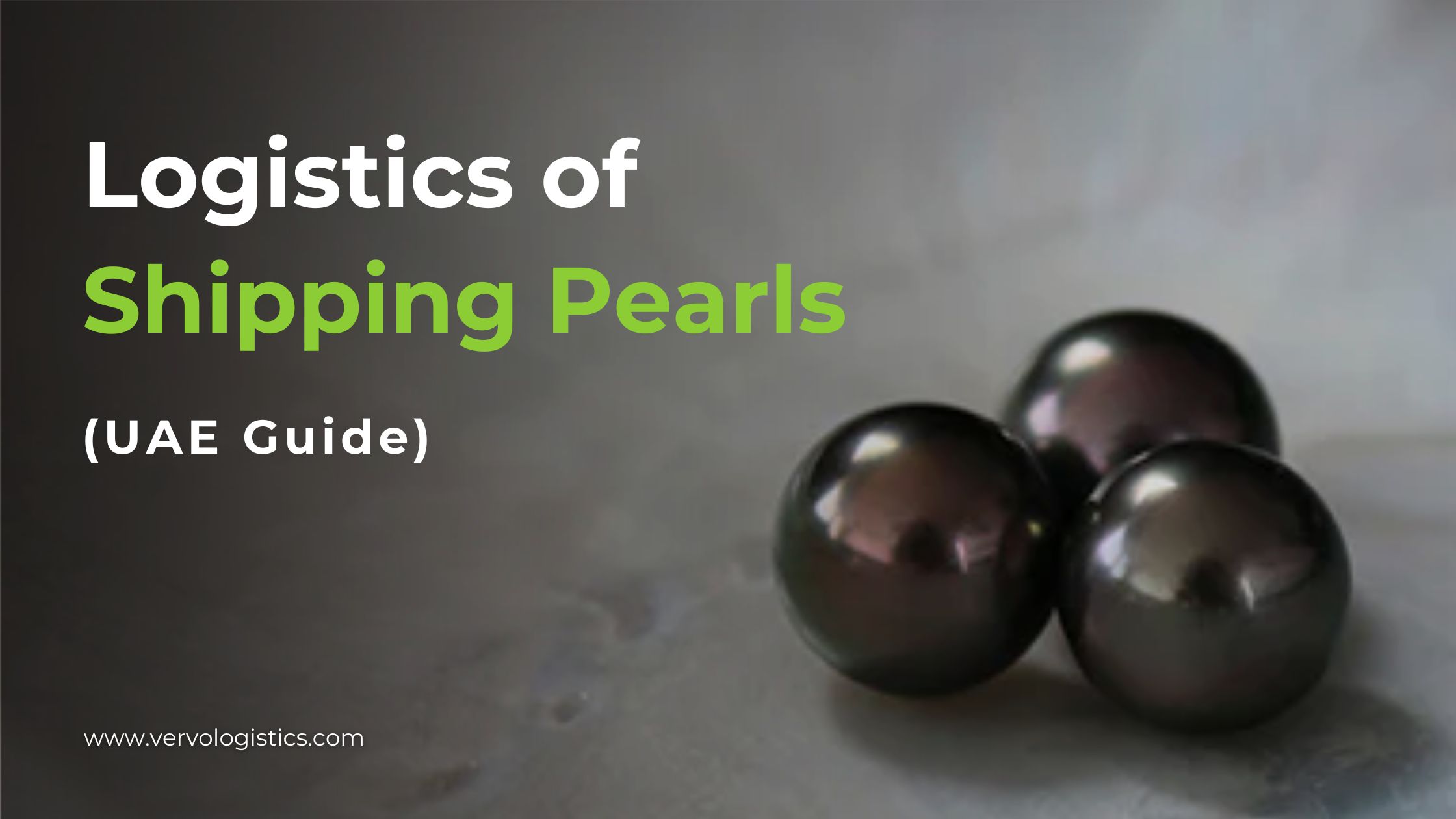The global pearl jewelry market is projected to grow from USD 11 billion in 2023 to USD 34.16 billion by 2033. Historically, the pearl industry was a cornerstone of the UAE's economy, with pearl divers plunging to depths of up to 20 meters to harvest these precious gems. However, the 20th-century oil boom eventually overshadowed the industry.
In 2022, the United Arab Emirates exported $61.8 billion in precious stones, metals, and pearls, ranking as the 3rd largest exporter in this category globally. That same year, precious stones, metals, and pearls became the 2nd most exported product from the UAE. The primary destinations for these exports were India ($15 billion), Switzerland ($9 billion), Hong Kong ($8.8 billion), Kuwait ($5.07 billion), and Saudi Arabia ($3.77 billion). Specifically, in 2022, the UAE exported $5.28 million in pearls alone, making it the 15th largest pearl exporter worldwide.
This release offers an overview of the logistics of shipping different types of pearls along with a simplified explanation of regulations for the import/export of pearls to/from the UAE
Types of Pearls: Cultured vs. Natural
The difference between natural and cultured pearls lies in their production methods. Natural pearls form naturally in mollusks, while cultured pearls have human intervention through nucleus implantation and cultivation.
Natural pearls are also extremely rare, found only in about 1 in 10,000 wild mollusks. Cultured pearls can be produced in large quantities through farming. While natural pearls tend to have baroque or irregular shapes, cultured pearls are typically round or symmetrical due to the implanted nucleus.
One more difference is that natural pearls usually have a lower luster compared to the bright, glossy luster of cultured pearls. Since cultured pearls make up the vast majority of the pearl market, they are by far the most frequently shipped and transported of the pearl varieties, as natural pearls are exceedingly rare.
Types of Cultured Pearls (The Most Traded Pearls)
The main types of cultured pearls are classified both by the mollusk they grow in as well as their size, color, luster, and geographic origin.
✅ Freshwater - Grown in freshwater river mussels, these are the most widely available and affordable cultured pearls. Colors include white, pink, and purple.
✅ Akoya - Grown in Akoya oysters, known for their classic white to pink colors and high luster. Akoya pearls are medium-sized.
✅ Tahitian - Grown in Tahitian black lip oysters, these pearls are large and come in black, grey, and green shades.
✅ South Sea - Grown in the South Sea pearl oyster, these cultured pearls are the largest (9-20mm) and come in white and golden shades.
✅ Chinese - Large freshwater pearls that grow in mussels; they can be dyed in a rainbow of colors.
Shipping Mollusks vs. Processed Pearls
Pearls can be shipped both in oysters or mussels and in bulk without oysters, depending on the purpose and requirements of the shipment. Some pearls, especially freshwater pearls, are sometimes shipped in their oysters for immediate use in decorative or culinary applications. Shipping pearls in oysters can assure buyers of the pearls' authenticity and origin. In some cases, live oysters with pearls are shipped for aquaculture purposes or live pearl harvesting demonstrations. For live transport, the delivery requires specialized conditions to keep the oysters alive, such as temperature control, oxygenation, and moisture maintenance.
On the other hand, most commercial shipments of pearls are of harvested and processed pearls, as they are easier to handle and less susceptible to damage or deterioration. Pearls are typically shipped in bulk to jewelers and manufacturers who will set them into jewelry. Here the pearls need to be shipped in padded containers or individual compartments. Each pearl is inspected and documented for quality and characteristics before shipping.
|
Aspect |
Mollusks |
Processed |
|---|---|---|
|
Handling |
Delicate, requires live conditions |
Easier, less susceptible to damage |
|
Regulatory Requirements |
Strict health and import/export regulations such as “CITES” regulations |
Standard commercial shipping regulations: information card, receipt, appraisal, etc. |
|
Packaging |
Moisture, oxygen, temperature control |
Padded, individual compartments |
| Market | Niche, specific buyers |
Broad, commercial buyers |
Processed Pearls - Packaging Steps and Materials
✅ Prior to packaging, each pearl is inspected for quality, size, shape, luster, and any imperfections. Pearls are sorted into categories based on these characteristics.
✅ For individual protection, each pearl can be wrapped in soft, non-abrasive materials such as foam peanut padding to prevent scratches; pearls can then be placed in small, individual compartments within larger containers. The compartments can be made from soft materials like velvet.
✅ Primary containers are small, sturdy boxes for each batch or type of pearl. The boxes should have padded interiors to cushion the pearls. Containers must allow for easy inspection without handling the pearls. Better to use generic, unmarked outer boxes to ensure the shipment does not attract unwanted attention.
✅ For small quantities, padded envelopes can provide additional cushioning. Wrapping primary containers in bubble wrap to add an extra layer of protection against shocks and vibrations during transport.
✅ Include detailed documentation with the shipment, such as a bill of lading, packing list, appraisals, receipts, and information cards to enhance customer satisfaction and trust.
Simplified Explanation of Regulations for Import/Export of Pearls to/from the UAE
If you're looking to get into the business of importing and exporting pearls to or from the UAE, here’s what you need to know:
1. Getting Started with Licensing
✅ Types of Licenses:
- Wholesale of Precious Stones (4669.07): Think of this as a license to buy pearls in bulk and sell them to other businesses. You’re basically a middleman between pearl producers and jewelry makers.
- Jewellery Trading (4773.11): This license is for selling jewelry directly to customers. So if you want to open a shop or sell jewelry online, this is what you need.
- Pearls & Precious Stones Trading (4773.12): Similar to the Jewelry Trading license, but more focused on selling pearls and other precious stones specifically.
✅ Third-Party Approval: Before you get your license, you need approval from the Security Industry Regulatory Agency (SIRA) and the Dubai Police. This is to make sure your business follows all security measures, like having proper surveillance systems.
2. Staying Compliant with Regulations
✅ Anti-Money Laundering (AML) Compliance:
- Register: You need to sign up on the GoAML platform. It’s like the official registry to keep everything legit.
- Policies: Create and update your AML policies. Think of these as the rules your business will follow to prevent illegal money transactions.
- Officer: Appoint someone in your company to oversee these policies.
- Training: Make sure your team knows the ropes about AML rules.
- Records: Keep detailed records of your transactions and report anything suspicious.
✅ Responsible Sourcing: You need to follow due diligence regulations, which means ensuring the pearls you source are not coming from conflict zones and are ethically obtained. The Ministry of Economy oversees this.
3. Importing and Exporting Pearls
✅ Licensing and Registration: Make sure you have all the necessary licenses and registrations in place to legally import or export pearls.
✅ Customs Declarations: When you’re moving pearls in or out of the country, you have to declare them to customs. This involves paperwork like commercial invoices, packing lists, and certificates of origin.
✅ Ethical Sourcing: Make sure your pearls are sourced ethically. For example, Dubai follows the Kimberley Process, which helps ensure diamonds (and similarly, other precious stones) aren’t funding conflicts.
➡️ Key Points to Remember
- Get the Right License: Depending on your business model—wholesale, retail, or both—you’ll need the appropriate license.
- Security Approvals: Secure approval from SIRA and Dubai Police for safety and compliance.
- AML Compliance: Follow anti-money laundering regulations diligently.
- Quality and Certification: Ensure your pearls meet international standards and are properly certified.
- Declare Your Goods: Always declare your imports and exports with the necessary paperwork.
- Ethical Practices: Source your pearls responsibly to maintain ethical standards.
📩 Reach out to our global team today with your shipment description; we move pearls to/from the UAE and globally: info@vervologisitics




